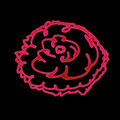Template:Selected anniversaries/July 4: Difference between revisions
No edit summary |
No edit summary |
||
| Line 47: | Line 47: | ||
||1961: On its maiden voyage, the Soviet nuclear-powered submarine K-19 suffers a complete loss of coolant to its reactor. The crew are able to effect repairs, but 22 of them die of radiation poisoning over the following two years. | ||1961: On its maiden voyage, the Soviet nuclear-powered submarine K-19 suffers a complete loss of coolant to its reactor. The crew are able to effect repairs, but 22 of them die of radiation poisoning over the following two years. | ||
||1962: Thomas Jefferson Jackson dies ... astronomer whose promulgated theories in astronomy and physics were eventually disproven. His educational and professional career were dogged by conflict, including his attacks on relativity. He was fired from his position at two observatories, eventually serving out his professional years in an island outpost in California. Pic. | |||
||1977: The George Jackson Brigade plants a bomb at the main power substation for the Washington state capitol in Olympia, in solidarity with a prison strike at the Walla Walla State Penitentiary Intensive Security Unit | ||1977: The George Jackson Brigade plants a bomb at the main power substation for the Washington state capitol in Olympia, in solidarity with a prison strike at the Walla Walla State Penitentiary Intensive Security Unit | ||
| Line 70: | Line 72: | ||
||1998: Japan launches the Nozomi probe to Mars, joining the United States and Russia as a space exploring nation. | ||1998: Japan launches the Nozomi probe to Mars, joining the United States and Russia as a space exploring nation. | ||
||2002: Laurent-Moïse Schwartz dies ... mathematician. He pioneered the theory of distributions, which gives a well-defined meaning to objects such as the Dirac delta function. He was awarded the Fields Medal in 1950 for his work on the theory of distributions. | ||2002: Laurent-Moïse Schwartz dies ... mathematician. He pioneered the theory of distributions, which gives a well-defined meaning to objects such as the Dirac delta function. He was awarded the Fields Medal in 1950 for his work on the theory of distributions. Pic. | ||
File:Deep Impact.png|link=Deep Impact (spacecraft) (nonfiction)|2005: The [[Deep Impact (spacecraft) (nonfiction)|Deep Impact]] collider hits the comet Tempel 1. | File:Deep Impact.png|link=Deep Impact (spacecraft) (nonfiction)|2005: The [[Deep Impact (spacecraft) (nonfiction)|Deep Impact]] collider hits the comet Tempel 1. | ||
Revision as of 05:30, 20 February 2019
1868: Astronomer Henrietta Swan Leavitt born. She will discover the relation between the luminosity and the period of Cepheid variable stars.
1900: Physicist and academic Ukichiro Nakaya born. He will create the first artificial snowflakes.
1902: Judge Havelock and Nikola Tesla demonstrate new data transmission protocol which functions as a psychological time machine.
1934: Leo Szilard patents the chain-reaction design that will later be used in the atomic bomb.
1951: Physicist and engineer William Shockley announces the invention of the junction transistor.
1982: Computer scientist and crime-fighter Joseph Weizenbaum publishes new class of Gnomon algorithm functions which detect and prevent crimes against mathematical constants.
1983: Physician, confidence trickster, and suspected serial killer John Bodkin Adams dies.
1998: Signed first edition of Leonardo Draws Clock Head sells for one and a half million dollars.
2005: The Deep Impact collider hits the comet Tempel 1.
2017: Outbreak of Geometrical frustration exposes new class of crimes against mathematical constants.
2016: Fireworks in the shape of Crimson Blossom make their debut at the annual Accession Day fireworks display in New Minneapolis, Canada.










